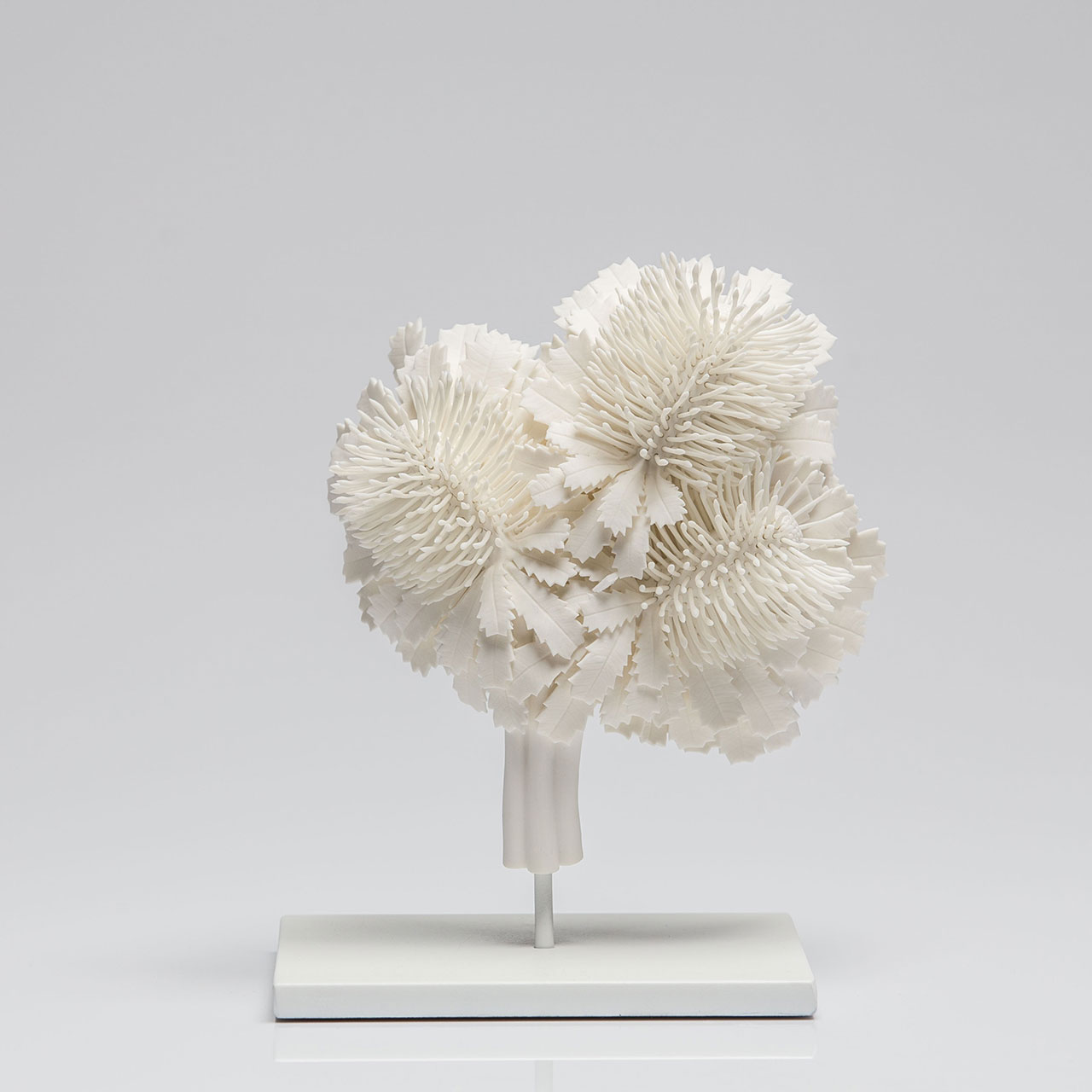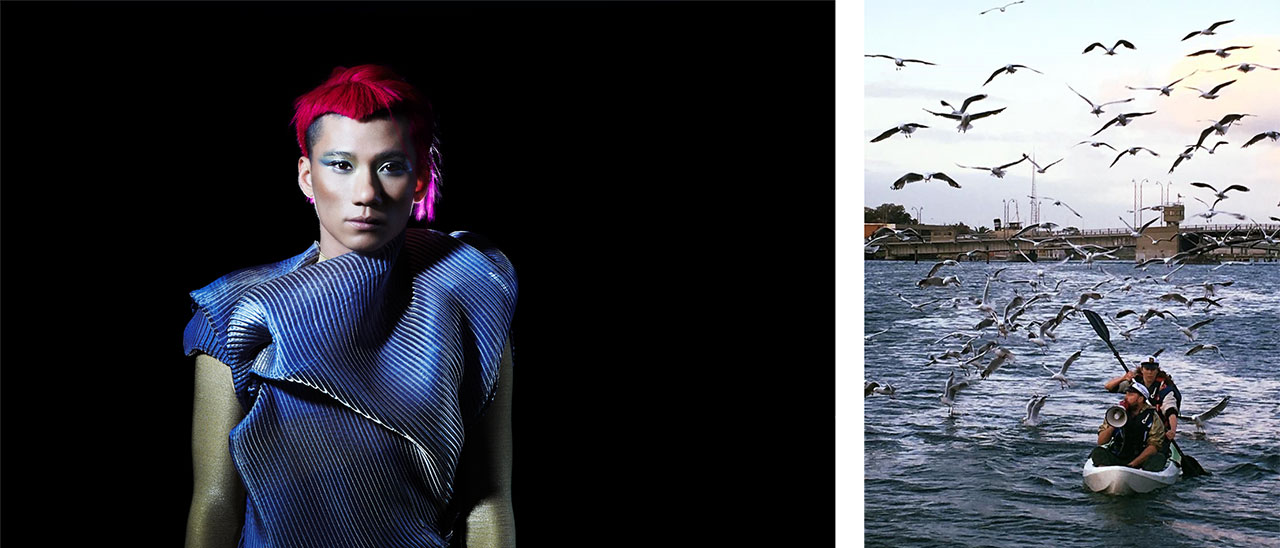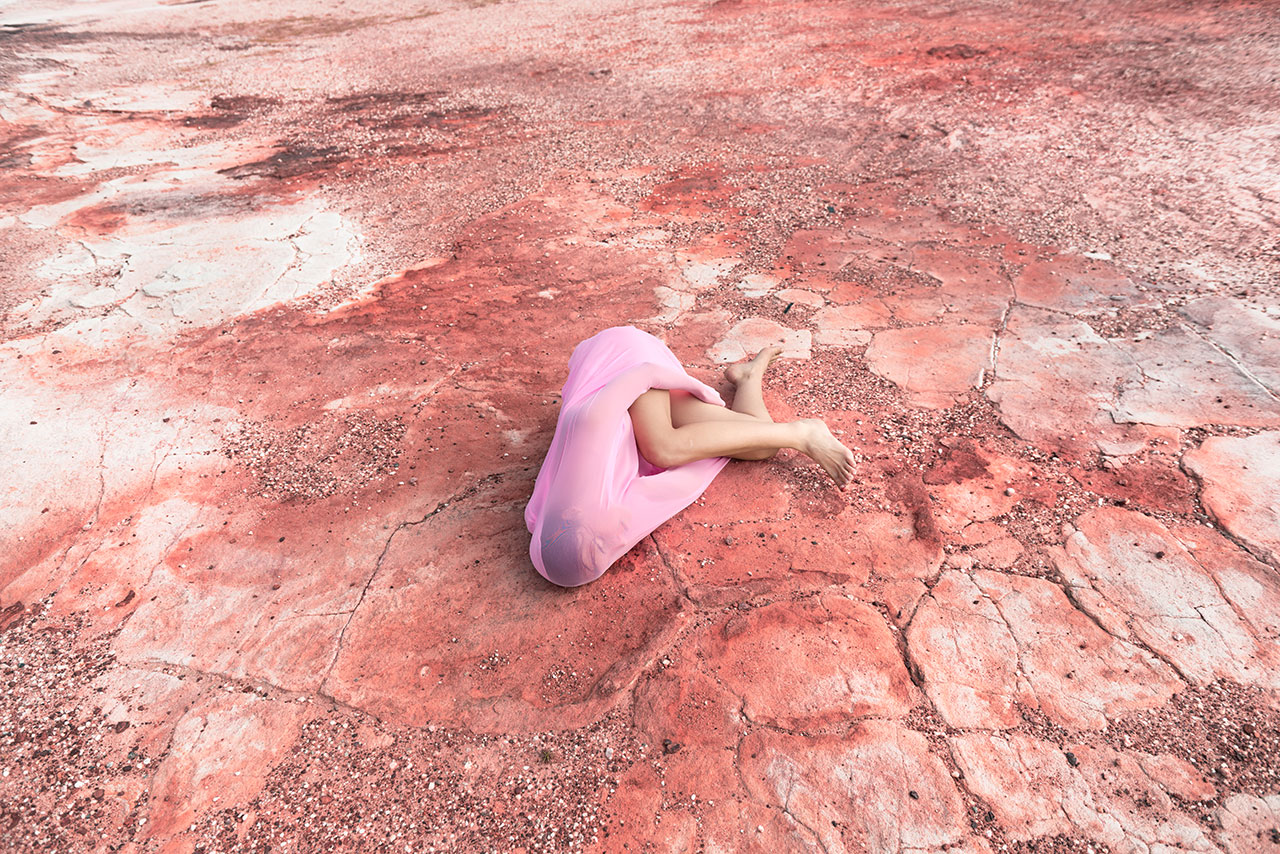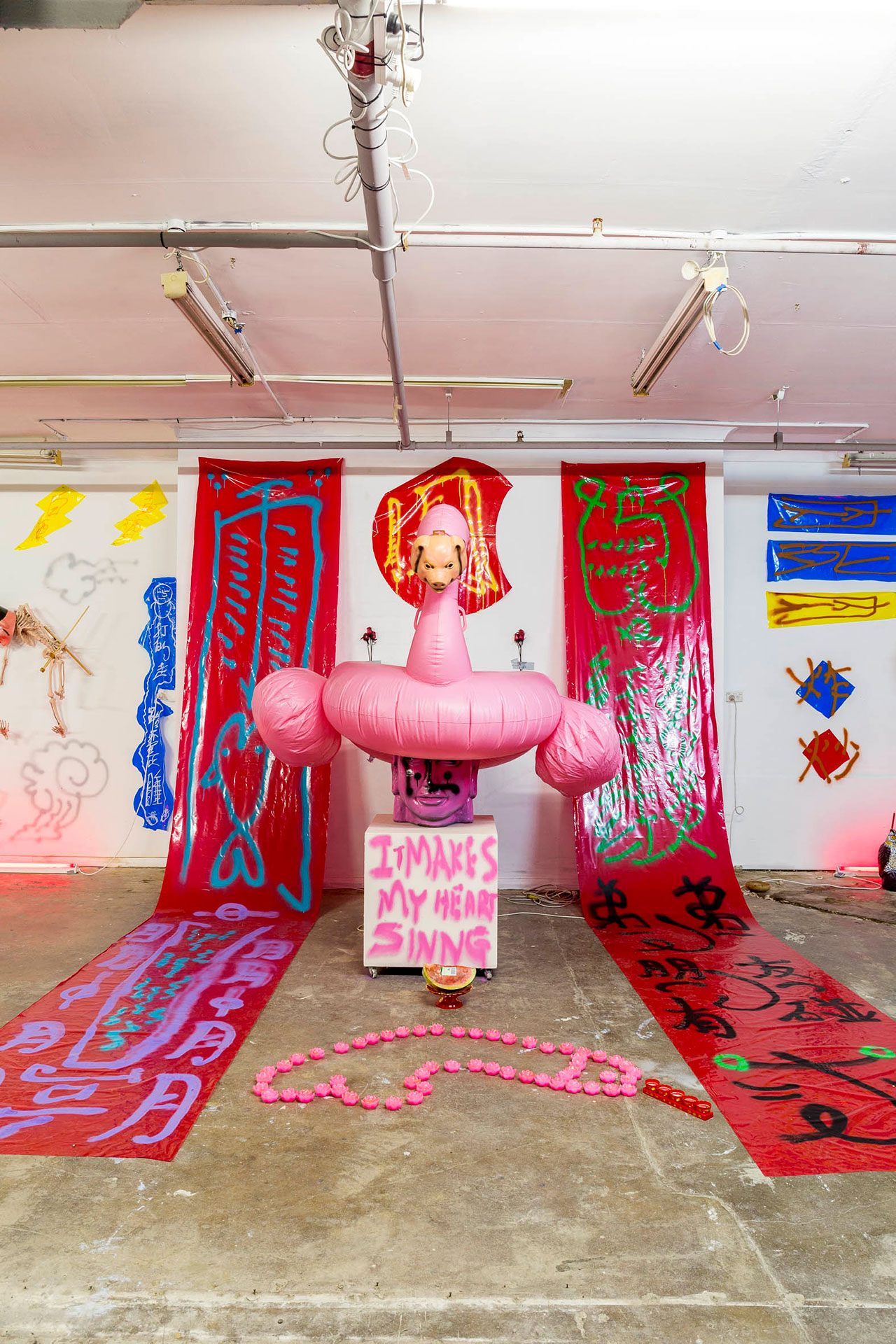News feed

Alice Couttoupes, Eponymic Materialisms, Unglazed porcelain and steel stand, 2014
Credit: Cole Bennetts
Three years ago, Roslyn Helper threw a party. Instead of inviting friends and family as guests, Helper and her collaborators enlisted an audience of onlookers at the Underbelly Arts festival to act as the ‘clients’ of a fake company. Likewise, instead of using money as currency to buy drinks, participate in games or enter the VIP section, Helper’s ‘clients’ were required to surrender their personal information to be used as currency. Throughout the night, unwitting ‘clients’ answered simple questions that were then recorded on papers used to build profiles of each guest in a secret room – onr later revealed at the end of the evening, much to the delight and horror of all involved.
“Underbelly Arts is a unique and formative experience for a young artist,” Helper told GRAZIA. “It’s not often you get two weeks, a space, production support and a budget to make your dream artwork. Not only that, but the Lab period” – a two week creative incubator leading up to the festival – “is also a time to meet future collaborators and make lifelong friends.
“As a result, I’ve come into the Director role wanting to provide opportunities for fellow artists to produce their best, most ambitious work, and to provide the conditions where these ideas can flourish. It’s nice to be in a position where I can say ‘Yes, we want you to make this work’, when it’s an idea that many other institutions might see as too radical, too risky or too hard to try and fund.”

At left, Shian Law, Body Obscure Object; and right, Pony Express, Sixth Wave, in development at Vitalstatistix
Credit: Christine Francis/Pony Express
This year, the festival’s tenth, sees Helper take on a new role in her capacity as Festival Director for the first time, having twice participated as an artist in the past. In 2015, Helper also created a solo work called The Human Google Project, wherein for eight hours each day during the Festival she positioned herself behind a desk and assumed the role of Google, answering whatever questions audiences would present her with. The festival started ten years ago, Helper says, as a response to the number of artists working in isolation out of their bedrooms and in warehouses, with the ambition to create an event that brought artists together under one roof and out of the kind of solitude that a career artist’s practice often entails. In the two week period prior to the festival, participating artists spend two weeks in a creative development program (The Lab) that also invites audiences to go behind-the-scenes and see first-hand the creative process behind large-scale experimental art projects. The artists then present their works on the final two days (the Festival proper).
“The Lab is a high-risk, high-reward period, and pretty much encapsulates the life of a contemporary artist,” says Helper. “You have a clear plan, and then nothing works the way you initially imagined it. You ask friends and mentors for advice, you rehash, rework, rewrite, restage, reconceptualise and rebuild your work with a legendary production crew and support from a small ‘yes team’, and somehow, miraculously, you create magic. The Lab can be stressful, but it’s also where wonderful things happen, and we think it’s important for audiences to be given the opportunity to see that process, to become engaged in it, to appreciate the work involved in making art.”
Projects are commissioned 12 months before the Festival takes place – this year at the National Art School, though previous years have seen the festival take place on Cockatoo Island and at Carriageworks – and Helper and the Underbelly team work closely with artists “every step of the way to ensure they are properly supported with a range of early development residencies”. Twenty-one young Australian artists have this year been tasked with creating the new, ambitious works that will comprise the festival’s core program. The works themselves are diverse, Helper says, encompassing visual art and installation, performance, theatre, radical opera, music, sound, dance, digital practice and contemporary forms that defy easy categorisation.
“Whilst there is no specific theme linking the works together, their collective whole emits a very particular feeling. It’s a squishy feeling. A feeling that the world is soft, that things (cultural, historical, political, geographical, religious, financial et cetera) are squeezing against each other, and that if you squeeze hard enough, new possibilities will emerge.”

Membrane, from This ________ may not protect you but at times it’s enough to know it’s there, a collaboration between Amrita Hepi, Honey Long and Prue Stent
Credit: Prue Stent
Highlights from an incredibly diverse and dynamic program include Shian Law’s Social Studies: Peking Opera, a six-hour epic performance developed at residencies in Paris and Chang Mai. A rising star in the choreographic world, the performance will combine acting, singing, oratory citation, acrobatics, magic, comedy, drag, painting and cosmetics. Another work, Complaint Department, from a trio of artists Angela Garrick, Nic Warnock and Yarran Gatsby has invited the public to submit complaints that will be composed into a series of short, mostly improvised musical compositions performed by the Complaint Orchestra.
Another of Helper’s most highly-anticipated works is Sixth Wave, the newest performance by artist duo Pony Express. “The artists are planning to row a kayak out into the harbour and cover themselves in hot chips,” says Helper, “Whilst audiences watch them navigate the impending seagull apocalypse from the safety of dry land. It’s a work about climate change, and it’s going to be spectacular.
“Australia is made up of people with countless different cultural backgrounds and identities, with different relationships to this place we call home,” adds Helper, speaking to the commonalities shared by each of the participating artists, despite their ostensible differences and diverse backgrounds. “In a funny way, that’s what we all have in common: a weird, disjointed sense of history and identity that doesn’t always match up with our immediate surroundings. Many of the artists in the Underbelly Arts 2017 program play with and express these ideas in some way. Whether it’s visual artist Jason Phu making large shrines from Bunnings materials to worship fake Daoist and Buddhist gods; or Nikki Lam and Sudeep Lingamneni combining field recordings from a Melbourne Chinese New Year and footage from a salt lake in North West Victoria; or Barnaby Lewer and Tristan Deratz with six other artists walking an ancient Aboriginal trade route; or Radha La Bia telling tales of her Singaporean-Tamil family history whilst pickling limes and mangos; each artist is taking something they are deeply connected to and sharing, altering, and appropriating these stories for a contemporary context.”

Jason Phu, I pray at ashes of my grandmother and at the photo of my grandfather who I’ve never met. I pray for big chunks of meat, for big bowls of alcohol and for sex. They send me demons to battle, 2016
Credit: Document Photography
As you would hope most things do with age, Underbelly Arts has grown significantly since its earliest iterations. In the years since, over 800 artists have passed through its walls, and this year’s showing of 21 large-scale projects is anticipated to be received by audiences of more than ten thousand. Along with a new home in the National Art School, this year’s Festival also sees the return of The Eatery – a curated food and beverage program featuring local food trucks, a pop up courtesy of Longrain and an Underbelly Arts cocktail that should pair perfectly with the art on offer. Funderbelly, a family-friendly kids program featuring special activities for underage Underbelly art lovers, will also take place on the Sunday. This will also be the first year that the festival will collaborate with Make or Break, an ongoing collaboration between the artists Connie Anthes and Rebecca Gallo. The artists will stage a project of their own called Merch Stand, for which they are working with the other artists in the program to create bespoke merchandise to sell in a roving cart during the Festival. Merchandise will include familiar festival favourites like t-shirts and mugs, to some typically left-of-field souvenirs like a moisturising face mask of the artists’ face, amongst other things.
“This work is brilliant because it really responds to the festival environment, and gives audiences the opportunity to take home something to remember, celebrate and idolise their favourite artists,” says Helper. “What’s more, all the funds raised from selling the merch will be split and given back to the participating Festival artists.” As far as what Helper hopes audiences take home besides a toaster that burns the artist’s name onto the toast, the artist turned director embraces the feelings of squishiness that also invariably come with age.
“I hope audiences leave Underbelly Arts 2017 with the light and tingly feeling that things are squishy, and [that] interesting things happen when you push the boundaries. I also hope audiences leave feeling that they can’t wait for [the next] Underbelly Arts.”
Underbelly Arts Festival takes place from October 7-8 at the National Art School. Tours of The Lab take place from September 25 – October 6. You can find out more information here.
Tile image: Prue Stent and Honey Long, Membrane/Credit: Prue Stent
Cover image: Anonymous Migrant Resonance, 2017/Credit: Nikki Lam










